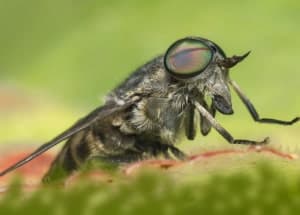Horseflies are among the most vicious blood-sucking pests. Unlike typical flies or mosquitoes, horse flies (particularly female ones) flaunt razor-sharp scissor-like jaws they eagerly use for biting mammals and sucking up the blood. This makes them a huge menace to have around.
In this post, I will teach you how to identify these irritating pests fast. Once you come to know your enemy, you will be ready to start battling it. Below, I will also enlighten you on how to get rid of horse flies and significantly reduce their population by using a variety of methods. So read on and arm yourself with knowledge.
[wpsm_titlebox title=”How to Get Rid of Horse Flies” style=”main”]
- Inspect the horse fly infestation area. Your task is to identify horse fly activity and its most noticeable concentration.
- Use traps or insecticides.
- Apply the safe product directly to the animals.
- Keep your home and grounds clean.
- Get rid of any standing water near your livestock.
[/wpsm_titlebox]
Horse Fly Identification: Know Your Enemy
What does a horse fly look like? If you’ve been asking yourself this question lately, you’ve come to the right place. You will recognize a horse fly by its super-sized dark gray (or yellowish-brown) hairy body, large soap bubble-like eyes, and subtle smokey spots on its translucent (or solid-colored) wings.
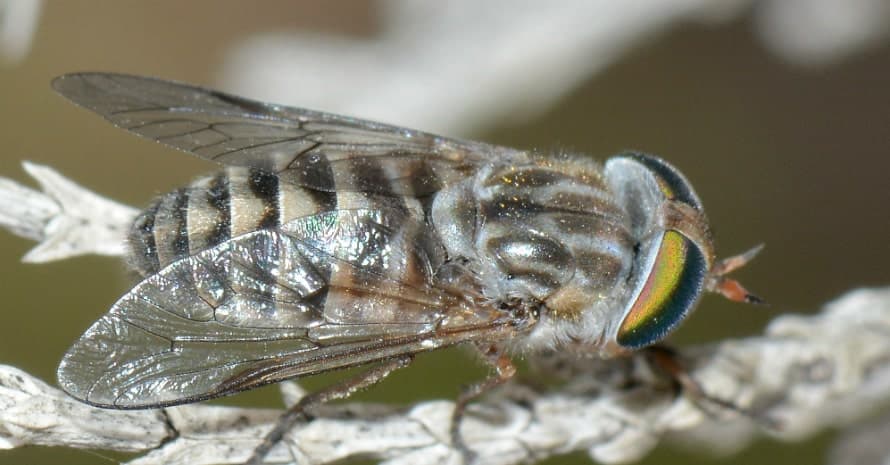
Because of their intense green eyes (also referred to as a green head), certain species of horse flies are also known as green-headed monsters. Adult species are speedy and strong. They tend to attack livestock, and their bites are very painful. Horse flies carry a variety of animal diseases, e.g., trypanosomosis, anthrax, hog cholera, and tularemia.
Where do horse flies come from?
If you’ve already been bitten by a horse fly, then you’ve probably realized that these vicious vampires must be visitors from dark and gloomy Transylvania in Eastern Europe. To put it in more realistic terms, horse flies breed in damp areas. They are attracted by places where cattle, horses, and other mammals live.
Needless to say, dogs and humans frequently end up on the receiving end of a horse fly’s irritating bite as well. By the way, did you know that whiteness in horses equals horsefly-proofness? Yep, it’s true!
Basically, here’s what attracts horse flies the most:
- wetness;
- warmth;
- water sources;
- shiny surfaces;
- carbon dioxide.
Horse flies life cycle
Because the larva needs moisture to survive, horse flies usually breed in swampy areas near streams and moist forest regions. Female horse flies deposit batches of eggs (up to 1,000) on wet soil or plants that grow above water. The larvae hatching from these eggs burrow down into the moist soil, feeding on decaying organic debris, snails, insects, and other tiny microorganisms in the soil or water.
There are over 3,000 species of horse flies out there. They need a polarization vision for host detection. Depending on the species, the larvae phase typically lasts for up to three years.
It’s interesting that an adult horse fly lives for only a few days. When the larvae mature, they crawl to dry areas and transform into the adult, tenacious, and blood-hungry green-headed flying vampires.
Getting rid of horse flies: A step-by-step guide
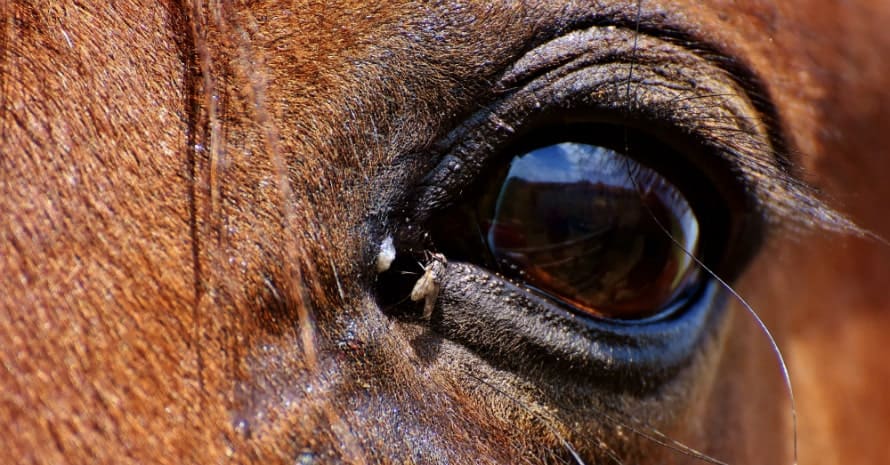
Unluckily, horse fly control is a very challenging task. Still, equipped with expert-approved information and top-notch products, your chances of succeeding are pretty high. Follow our step-by-step guide on eliminating these blood-hungry pests and choose the most suitable horse fly repellent for your situation.
Step 1. Inspect the horse fly infestation area
Now that you’ve made sure that you’re dealing with horse flies, you need to inspect the infestation area. At this stage, just observe where these bad bugs of summer hang out more often and evaluate the severity of the issue. That way, you will decide whether you require light horse fly control measures or need to develop a serious and multi-staged horse fly trap strategy.
Are you wondering where to conduct your observations? Look where livestock and manure holding areas are located. Additionally, observe such spots as swimming pools, compost piles, and ponds.
Your task is to identify horse fly activity and its most noticeable concentration. Watch the blood-suckers during the day, identify the time when they are most enthusiastic, and start working on your horse fly treatment plan.
Step 2. Choose the right horse fly control option
Here are some of the most effective ways of getting rid of horse flies to choose from:
Trap them
You can either buy a non-chemical commercial trap or make your own. If you opt for the former, choose among the following effective fly traps: disposable flypaper, Horse Pal fly trap, light traps, and flies-be-gone fly trap.
These traps are safe to use around your family and pets. And they’re a breeze to use. Just unpack them and hang where horse flies are especially active. One trap is capable of catching over 15,000 flies within a few weeks, imagine that!
Spray them
Use insecticides. If you’ve come across a severe horse fly problem, you can try a variety of chemicals to eradicate these blood-hungry pests. Pyrethroids, organophosphates, and organochlorines are among your best options in this respect.
Spray the insecticide all over your barn (except the areas where your animals’ water and feed buckets are located). Don’t forget to adhere to the instructions on the packaging and remove your livestock from the barn prior to using the spray. Avoid throwing insecticides into ponds or rivers, for they will poison the whole area.
Apply treatment directly to your animals
First and foremost, make sure that the insecticide you’re applying is safe to use directly on your animals. After that, spray the chemical over your livestock. If your horses or cows get scared in the process, use a sponge to rub the insecticide into their coats. Never neglect wearing rubber gloves while doing this. Do not allow the insecticide to contact your skin.
Try home remedies
Are you wondering what repels horse flies aside from the toxic insecticides? Well, such home remedies as garlic, vinegar, and essential oils are said to keep these bloodsuckers away from the horses. Curious about the best homemade and non-chemical fly repellent for humans?
Mix a pint of white vinegar with two ounces of baby oil and a spurt of dish soap. Spray it on your skin or clothes when you’re in the proximity of a horse fly hangout spot. This homemade repellent should keep them at bay.
Top 3 Horse Fly Treatments That Work Like a Charm
Keep getting attacked by swarms of blood-hungry horse flies on your property? Already noticed the grave effects of insects on grazing farm animals? That doesn’t sound like a healthy situation. With some of the most effective outdoor horse fly traps I’ve listed below, you will easily kill the hell out of those nasty bloodsuckers. Read on for their descriptions, specifications, as well as pros and cons.
1. Pyranha Wipe N Spray: Best Horse Fly Spray Overall
[amazon box=”B000HHSABM” template=”vertical” tracking_id=”how-to-get-rid-of-horse-flies-20″ button_text=”Check price on Amazon” button_detail=”https://shareasale.com/r.cfm?b=410159&u=2583381&m=43235&urllink=www%2Edomyown%2Ecom%2Fpyranha%2Dwipe%2Dspray%2Dp%2D10188%2Ehtml&afftrack=how%20to%20get%20rid%20of%20horse%20flies” button_detail_text=”Check price on DoMyOwn”]
Specifications:
- Scent: Citronella
- Item Form: Spray
- Item Volume: 32 fl. oz.
- Item Weight: 1.9 Pounds
- Item Dimensions LxWxH: 13 x 4 x 4 inches
- Target Species: Mosquitoes, Face Flies, Stable Flies, Deer Flies, Horn Flies, Horse Flies, Lice, Fleas, Ticks And More
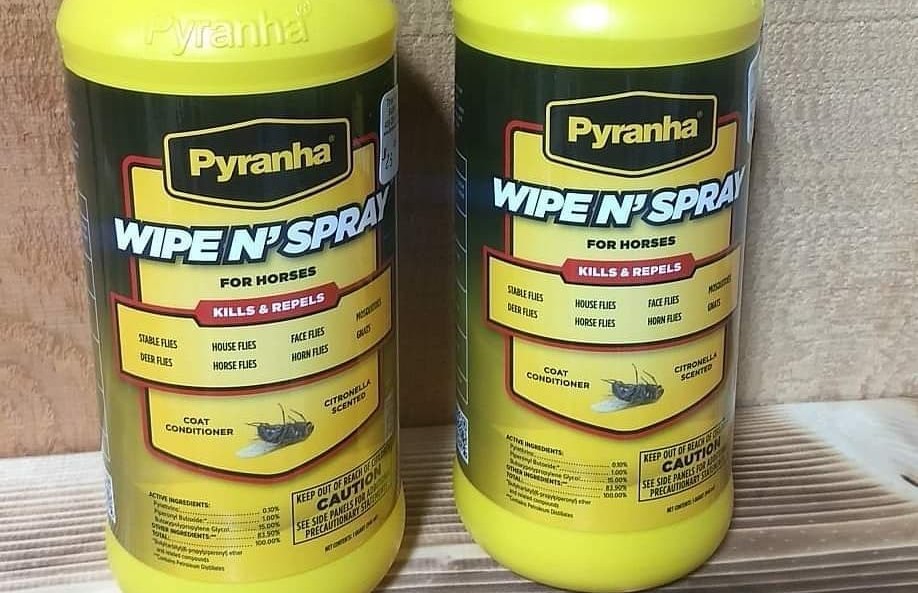
Wipe N Spray is definitely among the best horse fly sprays on the scene. It’s oil-based and very effective. Just make sure you spray (or wipe) the thing thinly and evenly for a better effect. For sure, Pyranha fly spray is not the cheapest horse fly repellent on the market, but considering its impeccable efficiency, it’s worth every penny it costs.
| Pros: | Cons: |
|
|
2. Victor M380 Fly Magnet Reusable Trap with Bait: A Lord of the Dead Flies
[amazon box=”B01DL410JQ” template=”vertical” tracking_id=”how-to-get-rid-of-horse-flies-20″ button_text=”Check price on Amazon” button_detail=”https://shareasale.com/r.cfm?b=410159&u=2583381&m=43235&urllink=www%2Edomyown%2Ecom%2Fvictor%2Dfly%2Dmagnet%2Dm380%2Dp%2D22281%2Ehtml&afftrack=how%20to%20get%20rid%20of%20horse%20flies” button_detail_text=”Check price on DoMyOwn”]
Specifications:
- Attractant is included
- Number of pieces: 3
- Item Weight: 9.1 ounces
- Item Dimensions LxWxH: 12.36 x 8.82 x 4.84 inches
- Target Species: Fly
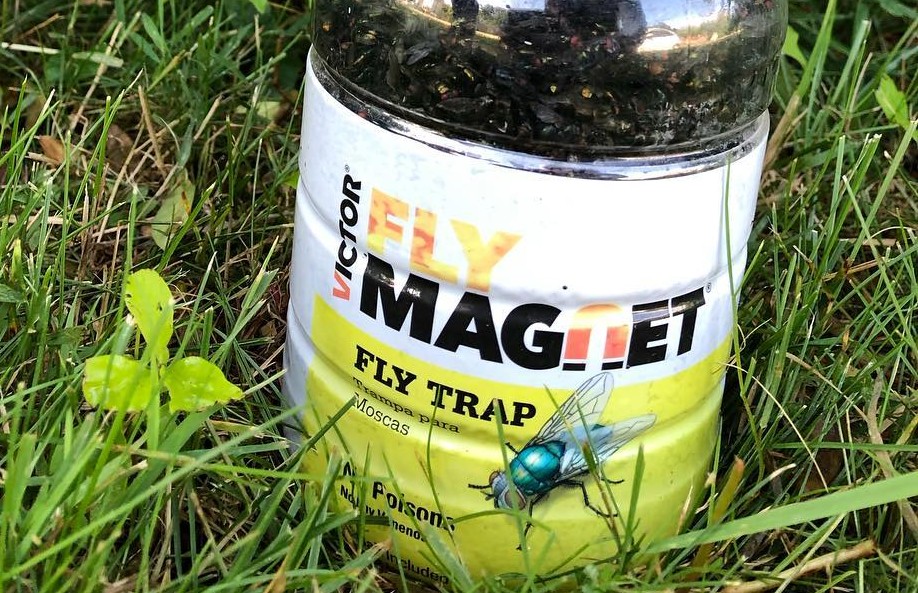
If you’ve already tried lots of horse fly repellent solutions (and none of them helped), this item is going to provide instant satisfaction. Just make sure you don’t place these traps near your house. Hold your breath while placing them, for they’re quite stinky. They work best in direct sunlight.
On an additional plus side, this trap attracts a variety of different kinds of flies: house flies, fruit flies, horse flies… And you will love the super straightforward instructions that come with the product. That being said, these horse fly traps work great. So, if you’re dealing with a horse fly problem, the Victor fly traps might be your best bet.
| Pros: | Cons: |
|
|
3. Maxforce: The Best Granular Horse Fly Killer
[amazon box=”B004A30BPC” template=”vertical” tracking_id=”how-to-get-rid-of-horse-flies-20″ button_text=”Check price on Amazon” button_detail=”https://shareasale.com/r.cfm?b=410159&u=2583381&m=43235&urllink=www%2Edomyown%2Ecom%2Fmaxforce%2Dgranular%2Dfly%2Dbait%2Dp%2D163%2Ehtml&afftrack=how%20to%20get%20rid%20of%20horse%20flies” button_detail_text=”Check price on DoMyOwn”]
Specifications:
- Active Ingredients: Imidacloprid 0.5%, cis-9-Tricosene 0.1%
- Item Form: Granules
- Item Weight: 5.62 Pounds
- Item Dimensions LxWxH: 11.57 x 7.64 x 5.87 inches
- Target Species: Fly
Are you looking for the best horse fly killer for farms? Maxforce may be exactly what you need. This product draws horse flies in like crazy and works very fast. Just put it down and watch the annoying pests die almost immediately — such a satisfying experience.
| Pros: | Cons: |
|
|
Step 3. Prevent horse flies: Easy steps to follow
Once the nasty blood-hungry female horse flies have been controlled, it’s time to ensure they don’t make a comeback and keep on ruining your summer outdoor experience. Over the years, experts have put an array of horse fly prevention methods through their paces. Below, you will find some of the most effective of them. Read on, and feel free to give them a try.
- Keep your property as clean as possible. Do not neglect cleaning up manure, old horse bedding, and spilled feed. Some people even spray their manure piles with chemicals to prevent larvae from metamorphosing into adult horse flies.
- Get rid of any standing water near your livestock. Create solid sewage systems and remove bowls with stagnant water. When horse flies are active, covering your pool is highly recommended.
- Always keep your greenery trimmed. Your (frequently moist) tall grass can become the perfect breeding environment for horse flies. Therefore, don’t forget to trim your greenery on a regular basis.
- Ensure your animals have a shelter to retreat to when horse flies attack them outdoors — barns for horses and dog houses for dogs.
- Make the most of horse fly repellents by applying them directly to your animals. Don’t forget about face masks and repellent tapes designed specifically for these purposes.
- Avoid movement. The thing is, horse flies are enchanted by movement. Therefore, if you’re looking to temporarily save yourself from an annoying horse fly, standing still is a nice option.
- Demonstrate the power of persistence. Now, if you’re not patient enough to just stand still and wait until that bothersome horse fly loses interest in you, try running away fast from it. You won’t manage to run faster than the speedy vampire flies, but chances are the pesky horse fly will give up chasing you in the long run.
- Avoid wearing dark colors. Horse flies love dark shades, especially blue. So, if you’re aimed at preventing these pests from attacking you, don’t wear dark-colored clothes.
- Stay away from water. You’ve probably already guessed that the answer to the ‘where do horse flies live’ question is ‘mostly near water.’ Thus, avoiding ponds and wetland areas would be a nice solution.
- Invest in a hat. According to experts, horse flies tend to be drawn to humans’ heads. They’re very much into biting human scalps. So, to protect your head and face from the nasty pest, wear a brimmed hat on a regular basis. For an even better effect, apply adhesive to your hat. This headwear may not make a great fashion statement, but it’s going to save you from the blood-hungry pests when you need it the most.
- Use dryer sheets. According to many outdoor lovers, the smell of dryer sheets repels horse flies. There are various ways of applying dryer sheets for this particular purpose. Some people insert the sheets into their headwear, while others rub them on their skin and clothes. This method is far from being scientifically verified; however, it’s surely worth trying.
- Walk beside tall people. This may sound like a joke, but a lot of entomologists agree that horse flies tend to attack the tallest section of a moving object. Thus, if you’re strolling beside a tall buddy, chances are they will choose your companion as a target.
[su_note note_color=”#dbe1d3″]Related Post:
[/su_note]
Horse Fly FAQ: Answering Your Questions
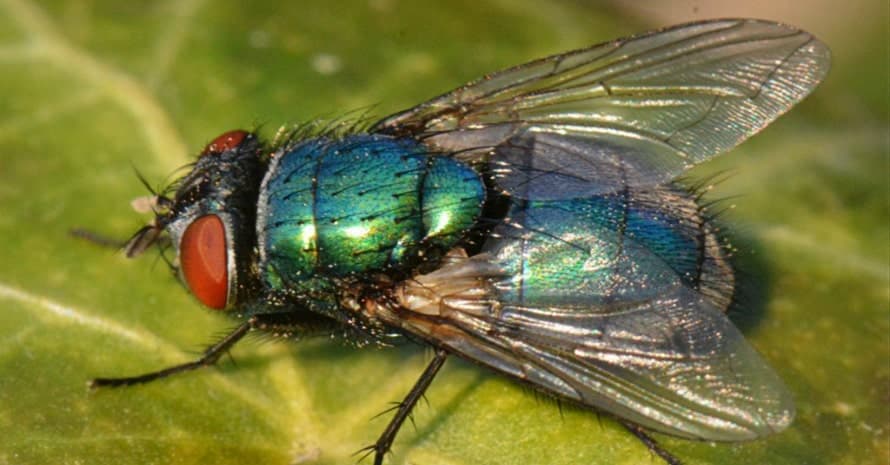
Here, I will answer your most frequently asked questions about horse flies. In case you have further questions related to the topic of our today’s discussion, feel free to ask them in the comment section at the bottom of this post. I will gladly get back to you with science-backed answers as soon as possible.
What will keep horse flies away?
A nice homemade horse fly repellent is good at keeping horse flies at bay (scroll up for the recipe). Alternatively, you can always make the best of insecticides – that is, when the horse fly problem becomes unbearable for you. Also, you can use various traps to get rid of horse flies; they’ve proven to be quite effective as well.
Why do I have horse flies in my house?
That’s because there’s something in (or near) your house that attracts these ruthless bloodsuckers. For instance, they are attracted by humid environments. Therefore, if you have a swimming pool, horse flies may be very fond of hanging out near the water. In addition to this, horse flies like shiny objects, dark colors, and carbon dioxide. So, if you see horse flies near your house, then get rid of these objects for prevention. Or buy traps straight away.
What smells do horse flies hate?
Essential oils made from peppermint, eucalyptus, tea tree, and lavender are effective horse fly repellents. Citronella oil is good at repelling these blood eaters as well. Also, the smell of garlic, apple cider oil, and vinegar is sure to keep them away. Furthermore, horse flies hate the smell of soap. That being said, you can use all this stuff to make your own horse fly repellent spray.
What is the best horse fly repellent for humans?
The best horse fly repellent for humans is something that’s non-toxic. Therefore, feel free to use the recipe I’ve published above and spray them until they get totally sick of attacking you. Don’t forget to combine this method with using horse fly traps for maximum results.

Conclusion: What’s Your Favorite Horse Fly Repellent?
Horse flies are strong, tenacious, and hungry for blood. They live a short life and want to make the most of it – obviously, at your expense. If you’ve come across a horse fly problem, you need to take action fast. I hope that this post will help you analyze some aspects of horse fly behavior and stick with the best horse fly repellent for your situation.
Perhaps, you already have a favorite horse fly spray or trap? If you do, why has it caught your attention? Is the effect long-lasting enough? Feel free to share your horse fly control experience in the comment section below. Your feedback is highly appreciated.
References:
- An unexpected advantage of whiteness in horses: the most horsefly-proof horse has a depolarizing white coat(US National Library of Medicine National Institutes of Health):
https://www.ncbi.nlm.nih.gov/pmc/articles/PMC2871857/ - Why do horseflies need polarization vision for host detection? Polarization helps tabanid flies to select sunlit dark host animals from the dark patches of the visual environment (US National Library of Medicine National Institutes of Health):
https://www.ncbi.nlm.nih.gov/pmc/articles/PMC5717639/ - Bad Bugs of Summer: Horse Flies (NC State University):
https://news.ncsu.edu/2011/06/bad-bugs-horse-flies/ - Ecological, behavioural and economic effects
of insects on grazing farm animals – a review(Institute of Genetics and Animal Breeding):
http://www.ighz.edu.pl/uploaded/FSiBundleContentBlockBundleEntityTranslatableBlockTranslatableFilesElement/filePath/128/strona107-120.pdf - Some Aspects of the Biology, Ecology, and Behavior of Horse Flies(Louisiana State University):
https://digitalcommons.lsu.edu/cgi/viewcontent.cgi?article=1862&context=gradschool_disstheses

